6 Floor Cleaning Mistakes to Avoid
The average floor takes a ton of abuse. Shoes, pets, kids and furniture all take their toll, leaving your floors looking worse for wear. While materials like natural stone, laminate, porcelain tile and even hardwood are designed to be durable, you still need to put some effort in when it comes to keeping your floors in tip-top shape. You may even need a little extra elbow grease on your side in the messy winter months.
Keeping your floors in great shape starts with knowing how to clean them properly. Knowing what floor cleaning mistakes are a big no-no will also help safeguard your space from catastrophe. Keep reading to learn more about five common floor cleaning mistakes you should avoid when doing a deep clean or tackling regular maintenance at home or in a commercial space.

The Top 6 Floor Cleaning Mistakes
1. Using the Wrong Vacuum Setting
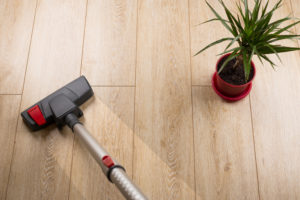
A layer of dust, debris and pet hair can tarnish the good look of your floors in a hurry. In a busy space, there’s a good chance you reach for the vacuum every few days to combat this common problem. Choosing a flooring material that hides dirt can help in a high-traffic room, but that only goes so far.
Your vacuum is a great tool against dust and dander, but you need to use it on the right setting. In general, hard floors benefit from a higher or “hard floor” setting so the vacuum won’t scratch or abrade the finish of your floors.
When switching to rugs or carpet, you can lower your vacuum to a lower setting so it will really dig deep. With a hard floor, that deep clean can only do damage.
The same goes for your vacuum attachments. Avoid using hard attachments on more delicate materials. Instead, reach for brush-like attachments with soft bristles to get those corners and hard-to-reach areas.
2. Using Harsh, Abrasive Cleaning Products
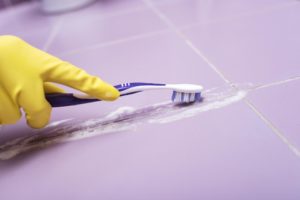
Resilient flooring materials are made to stand up to day-to-day abuse, but harsh, abrasive chemicals can leave scratches, discolor your flooring or damage grout if you’re dealing with tile. Chemicals like bleach are an especially big problem.
Your best bet for choosing cleaning products? Pick a specialty cleaner designed for your specific flooring material like hardwood, natural stone, tile or vinyl. You can also use water and diluted vinegar for a variety of different flooring types.
3. Not Following Instructions when Using Cleaning Products
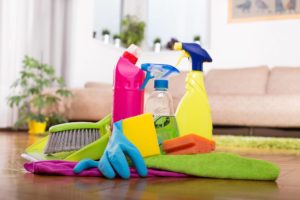
You’ve found the right cleaning product for your floor and you’re about to pour out a whole bottle to tackle one room. Wait, is that the right way to do it?
When using cleaning products, even if they’re specifically made for your flooring type, always take the time to read the instructions. If you don’t, you could be left with a soap or wax buildup that can be very hard to remove. It might make your floors look dull, too.
4. Using Too Much Water
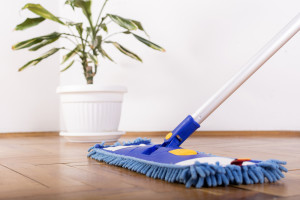
Water is a safe bet when you’re cleaning your floors since it doesn’t contain any harsh chemicals that can cause surface damage. Too much water however may penetrate your floors and create a little chaos for you down the line.
While some flooring materials like porcelain tile can stand up to a ton of water, others simply can’t. Using too much water for cleaning your hardwood, for example, could create buckling or discoloration in time.
So how much water is too much water? In general, you only need as much water as your mopping device can hold to clean properly. More than that and you’re at risk of soaking your floors and allowing them to absorb liquid before you have a chance to wipe it away.
When using water to clean your floors, as little as possible is always best. Remember that you can always add more water, but you can’t take it away so easily.
5. Your Steam Cleaner Isn’t Compatible with Your Flooring
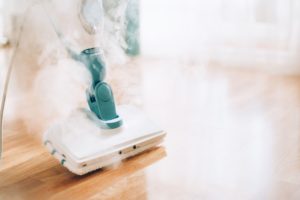
A steam cleaner can be a great way to get stuck-on gunk and deep-down dirt out of your floors. However, a steam cleaner can wreak havoc on some types of flooring materials.
In general, a steam cleaner will work well for vinyl, linoleum, porcelain and ceramic tile. Certain types of hardwood and laminate though may be damaged during the steam cleaning process. Others can get through the steam cleaning process just fine.
How do you know if you can steam clean your floors? Your best bet is to reach out the manufacturer or consult a professional the first time you choose to do it. If your floors can’t be steam cleaned, a professional service may have another deep cleaning alternative you can use for the life of your floors.
6. You Don’t Know What Works for Your Floors
Every flooring type, from natural stone to hardwood and laminate, is quite different. That means they all need to be cleaned a little differently. In your space, there’s a good chance you might even have a mix of different flooring materials that each need a unique type of care.
Take the time to do a little research on what’s safe for your floors. Use a few different safe products and see which you prefer. Over time, you’ll come up with a cleaning routine that’s safe, reasonably fast and effective.
Once you do, you might want to write it down so you won’t forget if you go a few weeks without doing any serious cleaning.
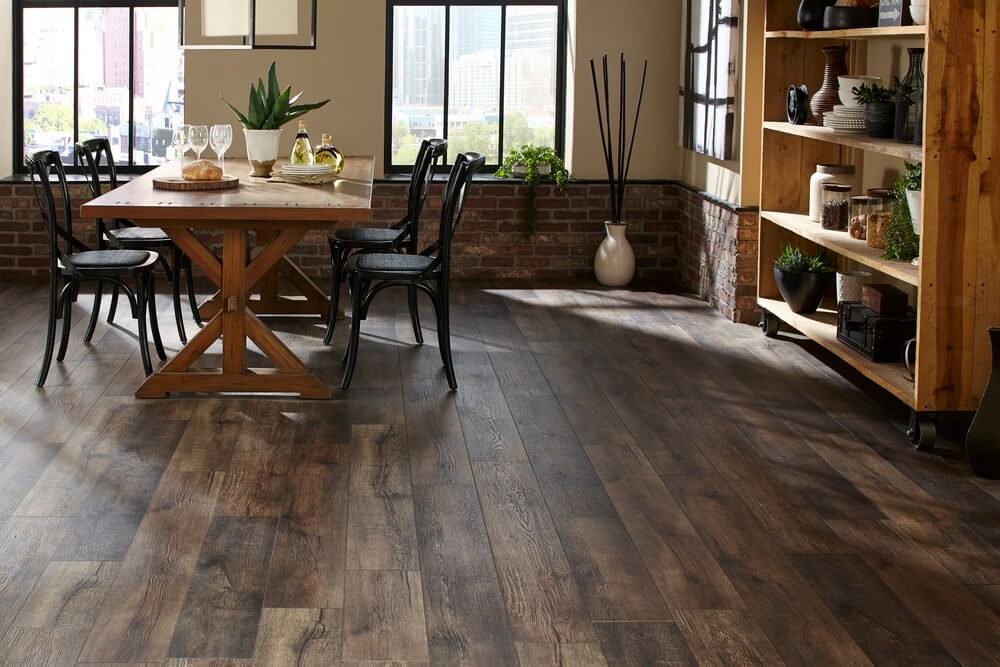
Your floors take up a vast amount of visual real estate in any space. They’re also a big investment that can be very costly to replace. The good news is that proper cleaning procedures can keep your floors in excellent shape for many years to come.
You just need to avoid the most common floor cleaning mistakes that homeowners and commercial business owners make. For the most part, common sense should be your guide, but the six tips here can help you establish a safe, effective cleaning routine.
Once you find something that works with your floors you just need to stick to it. Don’t worry though – we won’t tell anybody if you skip a week between cleanings!
